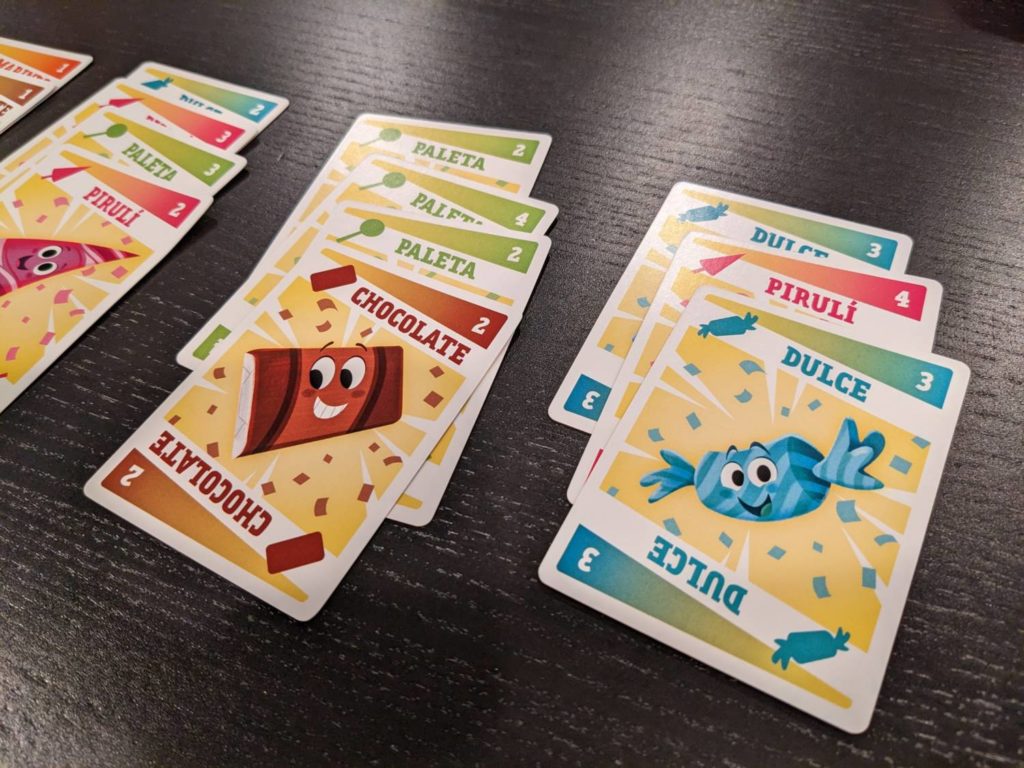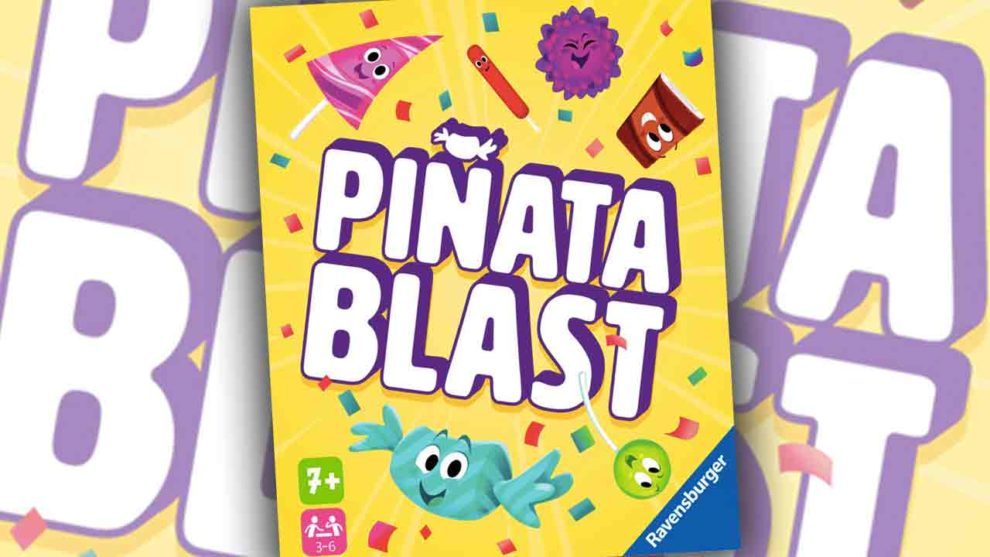Disclosure: Meeple Mountain received a free copy of this product in exchange for an honest, unbiased review. This review is not intended to be an endorsement.
My family enjoys shouting. Mainly, this shouting is tied to yelling at things that don’t matter—video games, maybe animals at the zoo, anguish when an adult announces the vegetables which will be served tonight at dinner.
So, when someone gets the chance to roll dice at our dinner table then snatch said dice from the grope-y hands of another player, we’re all over it. While not the sensation that Gimme That! was for the Bell family last year, we have a new entry in the shouty, grabby, dice game category: Piñata Blast (2023, Ravensburger).
The game doesn’t have lasting power, especially with the adults. But the kids couldn’t stop asking to play this game, so if you have young children old enough to hold cards and do simple addition, Piñata Blast is worth a look.

Tamarindo, Paleta, Pirulí, Oh My
Piñata Blast is played over a series of rounds; when one player’s hand is depleted, the game is over and points are totaled.
The 72-card deck is composed of six different candy cards, 12 cards to each candy suit. These are all candies that might fall out of a piñata, such as chocolate, paletas, dulce and tamarindo. (Tamarindo, which can best be described as a frightening-looking, smiling hot dog popsicle in the game, appears to be a sweet-and-sour candy offering in real life.)
The deck is shuffled before seven cards are dealt to each of the three to six players at the table. On a turn, a different player rolls all of the six-sided candy dice; when they hit the table, chaos lets loose. Simultaneously, players can play a card from their hand to take a matching result from any die and place that on their played card, scoring it for end-game victory conditions. If you can grab more than one die, all the better; scoring cards is certainly important, as is emptying your hand, because that will trigger the ending.
Of course, there’s a bit of a problem here. In some rounds, you’ll have cards that don’t match any of the rolled results. In other rounds, only one die will be showing chocolate, and three players with chocolate cards will be stabbing each other to try and grab that single chocolate die first. Also, one of the candy dice is green, representing “rotten” candy; whatever that die is showing can’t be collected in that round.
(Yes, I’m aware that all candy is in some way rotten. I just couldn’t quite hear you while eating the Kit Kat bar that was resting near my computer.)
Another issue: each of the candy cards has a point value. In each suit, there are 12 cards. Two of the cards are worth four points each, three are worth three points each, three more are worth two points each, and four of them are worth one point each. My game results seem to indicate that the player who happens to draw the highest-value cards wins a game of Piñata Blast a lot.
Like, a whole heck of a lot. “Daddy, you seem to win this game every time,” complained my son after my fifth consecutive victory the day we busted out the game. “Also, it feels like you have a better arm reach to score all of the cards.”
That brings me to my final point: Piñata Blast is best served as a game to play with your kids, but to not take it very seriously and let your children win some of the time. It might be better served as a game that kids only play with other kids, as long as they can hold their hand of cards.

A Nice Diversion
Piñata Blast worked best with my family as a game I could play with both of my kids (both of whom are under 10), but I built in some advantages for them to have a chance at winning. That started by rolling the dice close to my son’s seat, so that he could play his cards and reach for dice in a single motion.
Adults will notice issues with the game’s structure right away, but kids? Kids don’t care. Have you ever been to a birthday party with young kids and a piñata? Oh my goodness, it’s a comedy. Kids will grab the lowest rungs of candy society off a dirty floor or a nasty city blacktop to ensure they can get watermelon Jolly Ranchers into their stomachs without blinking an eye.
And when it comes to gameplay, most kids won’t care that the rules don’t really feel fair. They just want to grab dice and score those cards. If they win, great; if they don’t, they want to play again and roll more dice. Our family has already played this game ten times, in part because the game only takes about 10 minutes to play with 3-4 players. My wife rolls her eyes when the kids want to play, but we all get a good laugh out of watching our kids reach for those dice and count up their points.
Piñata Blast is elevated fare with young kids at the table. I’m not sure I would want to try this at six players (the game’s max player count), but watching six kids go at it might be worth a look!












Add Comment